Evidence Of A Predator
We find bigfoot evidence of a large predator throughout Colorado on our investigations.
These are some of the examples of what we find often. I have three sets of bones in my freezer ready to be tested at any time to anyone willing to foot the bill. These bones could very well contain the DNA of the culprit.
|
|
|
|
|
|
.
|
|
|
.
.
|
|
|
|
|
|
spacer
|
|
|
spacer
|
|
|
The natural world is a tough world. It is ruthless, but efficient. If you pay attention to the signs, you can learn a lot about what they are telling you. This is where SIR excels as a group in the field.
These photos were found on a recent three day outing conducted in our Central Colorado location by Mike Johnson and Dave Ottke. This is like nothing I have ever found in relationship to fecal matter in the woods. It is unique and different on many levels.
|
|
|
.
The photo below is of a large pile of scat that was found in dense woods in 2010. In fact, we left it not really knowing its significance.
I e-mailed the photo to Dr Jeff Meldrum and he said he thought was either Sasquatch or Bear. With this in mind, I drove
four hours up the next day on a Sunday and 4 hours back to collect it.
It is full of elk hair with a few long, black curly hairs in it. It was difficult to find the next day in the dense undergrowth and
heavy downfall.
|
|
|
Thanks as always, Mike J
Sasquatch Investigations of the Rockies
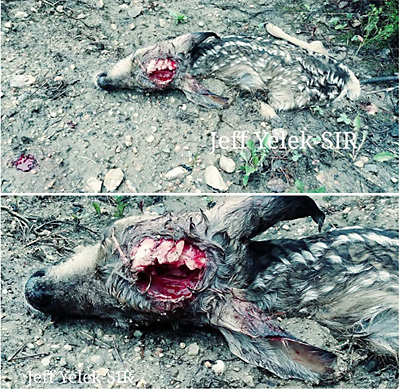
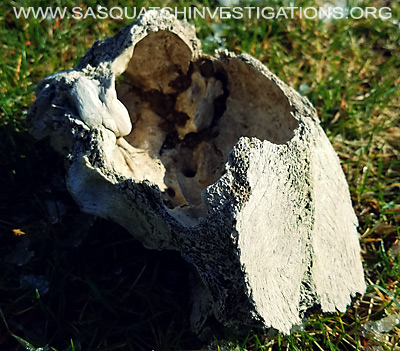
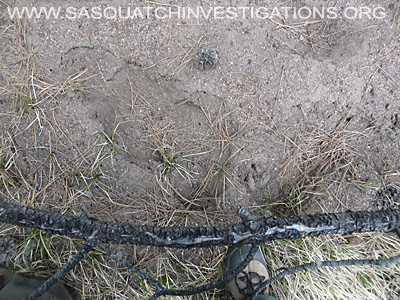
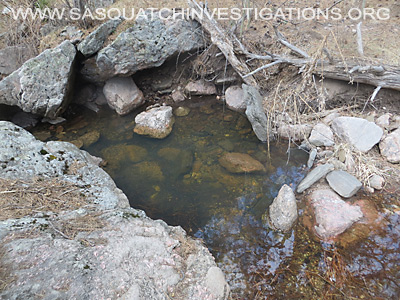
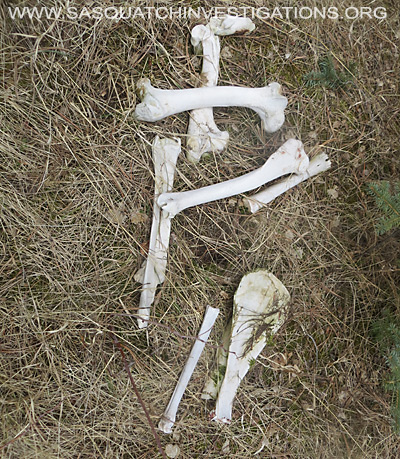
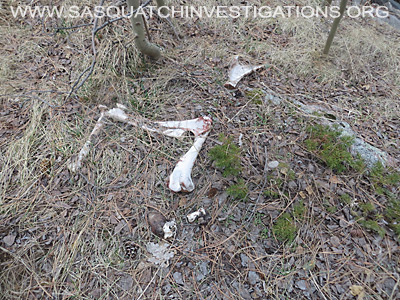
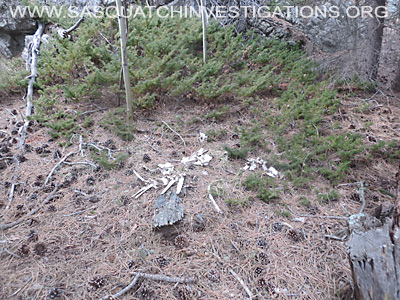
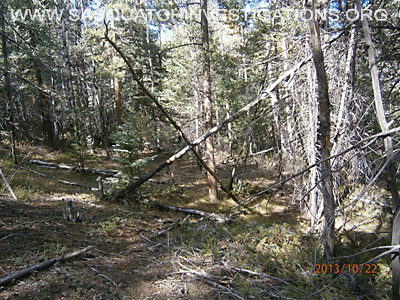
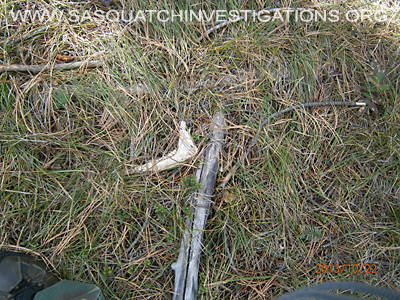
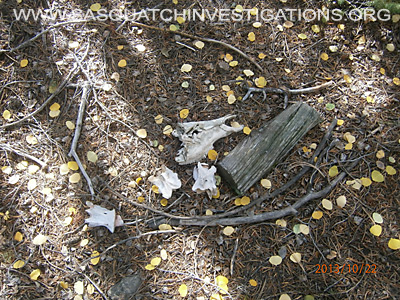
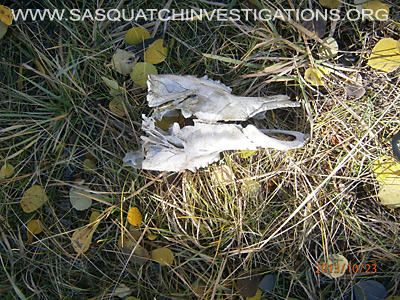
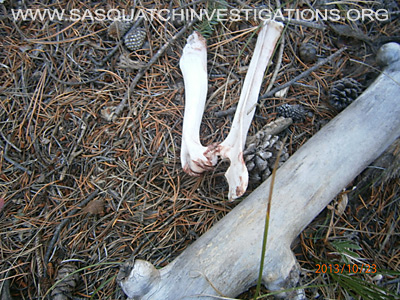
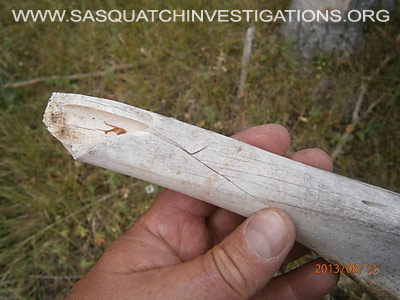
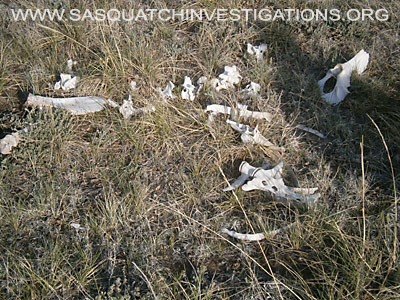
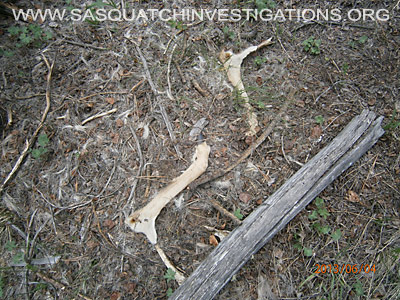
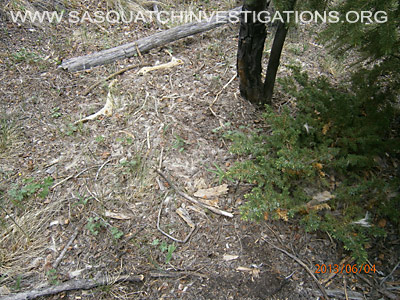
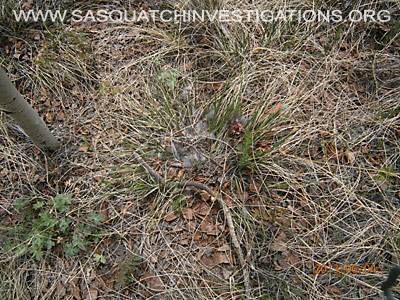
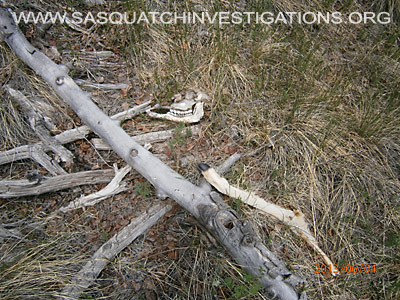
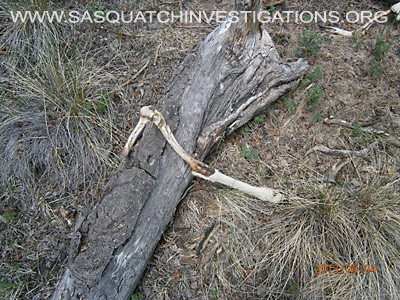
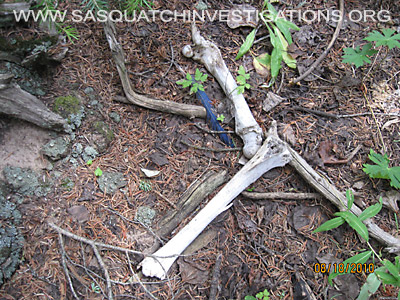
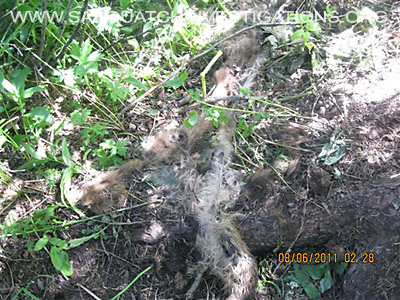

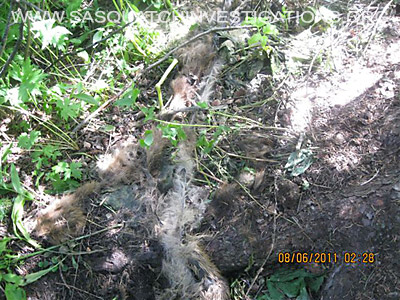
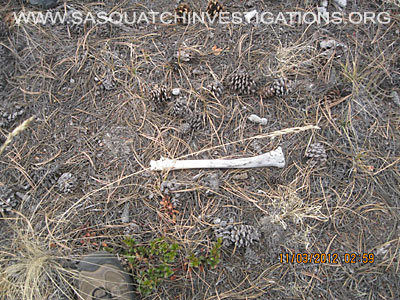
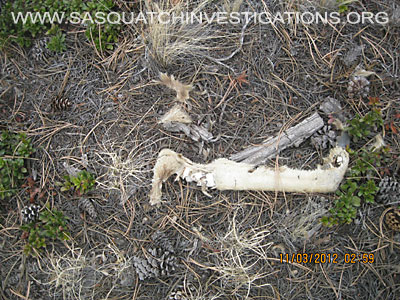
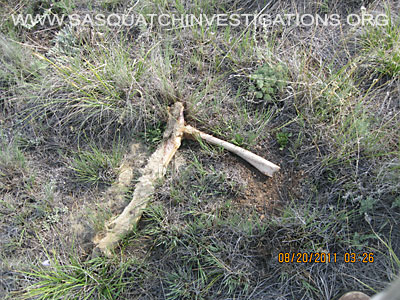
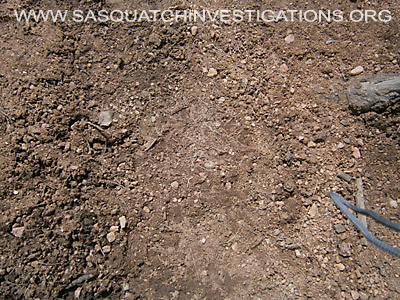

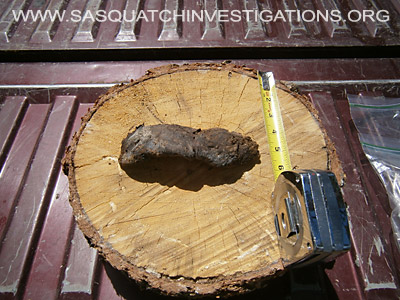

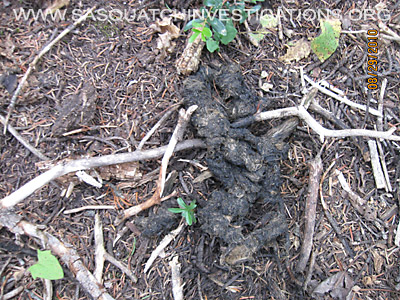
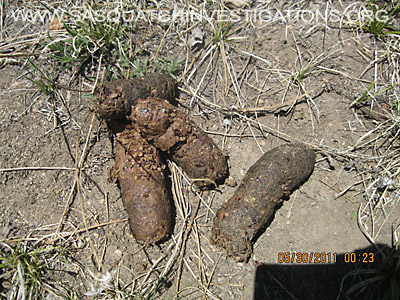

{ 6 comments… read them below or add one }
I live in reevesville, sc and last night about 10:00 pm I heard some animal noise I have never heard before. To describe it would be a type of whoop sounds. It sounded like the animal was looking for something. I did not record the event though I had a camera 5 feet from me. It was extremely loud because I heard it over the baseball game. The sound started moving away from the house. Tommy
Mike, Some of the pictures of the Deer Legs with the hair is what I find all the time at Mountain Lion kill sites. I have even found the Mountain Lion tracks with them on occasion when there is snow on the ground. The Lions will sit there and chew all the hair out then bite the lower legs off before carrying the rest of the carcass off to where ever they cache it for later.
Eww a Bigfoot poop
You might be interested in a Paper that I recently co-wrote concerning “teeth marks” in Dear and Elks ribs. The evidence is quite compelling.
http://www.rel-mar.com/sdb/
The paper is about Hominin bite evidence that we collected from three different locations around Mount St. Helen’s. The conclusions are found on pages 75-80.
Hello,
I’m a producer on the hit TV series Paranormal Witness. We are looking for more terrifying eye witness accounts of the unexplained and would love to make a film about a cryptozoological beast. If anyone has ever been chased, attacked, had a terrifying encounter with Bigfoot or any other mystery creature please get in touch as I’d love to heard your story: olive.king@raw.co.uk,
Thanks
Hello Michael and the S.I.R. team, first, let me begin by stating that I do NOT think that Sasquatches are predators, carnivores, or even omnivores. My reasoning for this is mainly because, if Sasquatches do exist, being a large ground-dwelling bipedal hominid, I feel that they would have evolved along the same lines as other primates. Take, for example, the gorilla.
Gorillas are ground-dwelling, predominantly herbivorous apes. According to science, they are the largest living primates (Sasquatches notwithstanding). The DNA of gorillas is highly similar to that of humans, from 95–99% depending on what is counted, and they are the next closest living relatives to humans after the chimpanzees and bonobos. Now, since gorillas prosper on a herbivorous diet, I see no reason why a large bipedal primate, such as a Sasquatch, wouldn’t evolve along those same lines as well.
According to nationwide sighting reports, Sasquatches are about as widespread in the United States as gorillas are in Africa. The gorillas’ natural habitats cover tropical or subtropical forests in Africa. Although their range covers a small percentage of Africa, gorillas cover a wide range of elevations. The mountain gorilla inhabits the Albertine Rift montane cloud forests of the Virunga Volcanoes, ranging in altitude from 7,200–14,100 feet, while the lowland gorillas live in dense forests and lowland swamps and marshes as low as sea level, with western lowland gorillas living in Central West African countries and eastern lowland gorillas living in the Democratic Republic of the Congo near its border with Rwanda. I think this points us in the right direction, considering all the places where Sasquatches have been reported to exist.
Just because people have lost their way and taken to hunting, killing, and meat-eating, does not mean that Sasquatches would have done so as well. In fact, I feel that we are the ONLY species on Earth that has no clue as to our True Place in the world. ALL other animals know their True Place—a lion does not graze; an elephant does not hunt—they KNOW their True nature! We do not.
Let me explain myself further, if I may. My theory of early humans being hunter-gatherers is somewhat different from what we are taught in school. Personally, I feel that humans are NOT predators by nature; we ARE scavengers! However, the accepted school of thought is that early humans hunted animals and gathered seeds and grains. This is certainly true for later humans, but I sincerely deem that our earliest ancestors hunted for seeds and grains (ie: as in mushroom hunting) and then gathered them once they were found! We hunted for wild edibles. Thus, we are NOT predators, we ARE scavengers. Why else are TV shows like Antique Roadshow, American Pickers, and all those treasure hunting documentaries such a success? I feel they touch a deep need within us to scavenge!
I experience this same thrill every time I go into the woods to forage wild edibles, and successfully make a good find. It touches a primeval need to scavenge! But the word scavenger has been made to put a bad taste in people’s mouths, as if the act of scavenging is beneath us. That’s sad and unfortunate! Again, arrogance and ignorance has superseded our instincts! A little humility will heal a lot of the damage we have done to the world, if we could only once again know our True Place in the world. Ah, is it any wonder why the Sasquatches avoid us! We have become quite dangerous, and I’m sure that every species on the planet has come to realize this fact.
My theory on how humans came to acquire a taste for meat is very simple. During the last great Ice Age, when vegetation was scarce, I think humans started following the predators around, and simply scavenged scraps of meat from their kills, much in the same way hyenas and jackals steal scraps of meat from the kills made from lions and leopards.
Anyway, with all this being said, let me tell you a little bit about myself. My name is Mark; I’m 50 years old, and grew up in the woods. Over the past 26 years, I have hiked all over the Rockies, from Colorado, through Canada, and up to 200 miles north of the Arctic Circle. I do NOT hunt, fish, or trap. In fact, I’ve been vegan since 1989. When in the wilderness, I carry NO firearm, bear spray, or even an air-horn. Since I do not enter the wilderness with malice in my heart, and since I do not carry the scent of a meat-eating predator, I have been privileged with many animal encounters—I’ve hand fed wild elk, moose, coyote, fox, and wolf; on more than one occasion, I woke up from a good night’s sleep with animals, such as opossum and raccoons, sleeping ON me! However, in all my time in the wilderness, I have seen absolutely no proof or evidence that Sasquatches exist.
This does not mean I disregard their existence as hoax or myth. I just feel that the countless research groups are going about finding them the wrong way. I have seen many documentaries where large groups of humans, wearing camouflaged gear, spend hours stumbling about the woods making a horrible ruckus, shouting, throwing rocks, using all sorts of high-tech camera gear, trying to catch a glimpse of these elusive creatures. In one video that I saw, the researchers even had a helicopter buzzing the tree tops with infrared and thermal imaging equipment hoping to scan the animals. Yes, the way that these so-called researchers conduct their research is, in my opinion, laughable; in other words, not scientific at all. Just because one has expensive and high-tech gear doesn’t mean that these tools are being employed in a scientific manner.
The photos on your website, of hiding in plain sight, the lair of the Sasquatch, predator evidence, tree breaks, mid-tarsal breaks, tree structures, rock structures, foot prints, hand prints, etc., etc., are, in my opinion, not scientific evidence at all, but merely hopeful musings by your team. I mean, if you stare at clouds long enough, sooner or later, you will see amazing shapes!
Now, I do have an idea on how a successful Sasquatch research operation can be employed, but I haven’t put this into effect as of yet because I am not 100% positive that the results would be beneficial to the species.
While I do respect your organization’s mission statement, especially in regards to assisting with responsible legislation towards species protection and the right to co-exist freely amongst us (I wonder why we won’t apply this same benefit to all of our animal brethren); priding yourselves in trying to always be a friend to them; with no strings attached; not harming one or associating with people who do so knowingly; friendship first and evidence second; making sure that they are always treated with the same dignity and respect everyone should be entitled to by right in our great country (again, it saddens me that we won’t extend this same love to ALL animals that call our nation their home); I still can’t but think that if and when a Sasquatch is successfully proven to exist, their species will fall prey to the same horrors that every other species on the planet succumbs to when at our mercy, or namely, lack thereof.
Yes, I share your desire to want to respectfully educate the public about them and their ways, to seek their trust and friendship as we grow and learn more about them (incidentally, I feel they already KNOW much about us and our ways, hence, their hesitation and reluctance to make contact with us, since we have become the most heartless, cruel, and dangerous creature on the planet; if they do in fact exist, they have clearly witnessed the carnage that we have inflicted upon the world and its inhabitants—they’ve seen us murder countless deer, elk, moose, grizzly, wolf, etc; they have watched from the shadows as we clear cut their ancient forests)!
It is for this reason that I haven’t embarked on my mission to actually find them. But it is my firm conviction that the ONLY way that they will allow us to make contact, is if we humble ourselves in the undertaking. What I mean by this is simple: We MUST enter the wilderness as a Sasquatch (ie: NO large groups, NO high-tech gear, NO unnecessary sounds, NO cooking of flesh or other food).
My original plan was to enter the Pasayten Wilderness (in my opinion, the most likely place for them to exist), completely naked, save for perhaps a Bison hide as my only garment, and live there in the wilderness for at least one full year, existing AS a Sasquatch, foraging only wild edible plants (raw and no use of fire), and walking softly upon the Earth. Of course, for this endeavor to be successful, the entire wilderness area MUST be closed off from hikers, campers, hunters, trappers, and fishermen for the length of the experiment.
Again, I can’t overstate this enough: I am 100% positive that if and when Sasquatches are proven to exist, they will fall to the same sad fate that every other animal on Earth has fallen when it comes to the association of Man, and for this reason alone, I have abandoned my quest to prove their existence. Thanks for understanding.